Introduction – UNICEF
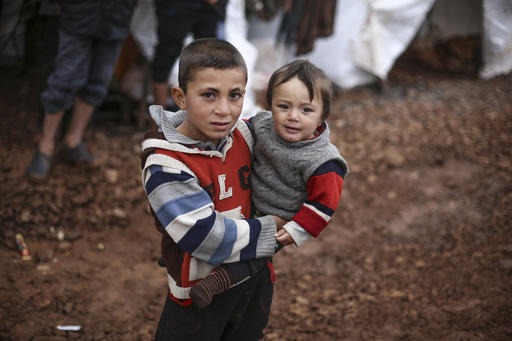
“Conflicts around the world are lasting longer, causing more bloodshed and claiming more young lives” – UNICEF Executive Director Henrietta Fore
Conflict remains the main driver of humanitarian needs, while extreme weather events, hunger, and infectious diseases drove many people to seek and depend on emergency aid. Millions of children uprooted from their homes were in desperate need of protection and humanitarian assistance. Overall, 183.6 million people required humanitarian support globally during the year.
Faced with these challenges, UNICEF responded to emergencies in 61 countries in 2019 and in the first eight months of the year, we provided humanitarian assistance to nearly 29 million children.
Yemen Crisis
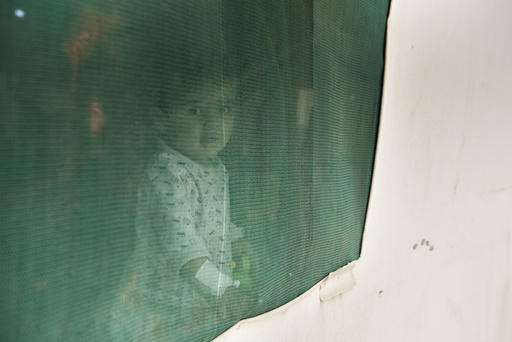
In 2019, Yemen was recorded as the largest humanitarian crisis in the world with children bearing the brunt of such armed conflict. People had to travel hundreds of kilometers across rough terrain to reach the nearest hospital—unsure if they would even get the treatment they so desperately needed.
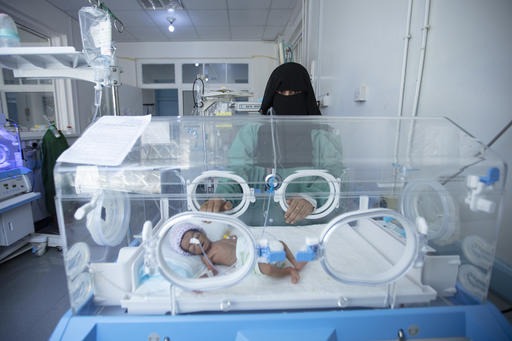
Baby Hassan and his mother Iftikhar, 29, in the neonatal intensive care unit at Al Sabeen Maternal Hospital in Sana’a, Yemen, on 23 October 2019. Hassan was born prematurely. Though a new-born, he has already borne the brunt of the ongoing humanitarian crisis in Yemen. His parents had moved together to Al Hudaydah in search of work but as fighting escalated seven months ago, they fled, seeking safety. Holding Hassan closely to her, Iftikhar says, “The war got worse, all the people around us were killed in an airstrike – our neighbors were killed. So, we fled, with nothing. The ongoing crisis is affecting the ability of hospitals to provide neonatal care. In spite of the situation Yemen is in, we have doctors and nurses, who earn less than US$50 a month, fighting to keep these babies alive,” she says. “UNICEF keep the electricity running, provide medicine, supplies, and incentives for health workers. Undoubtedly the hospital would close if we weren’t here.” Thanks to our valued donors, UNICEF is able to keep these services running. Despite the complexities of the crisis, and hospitals fighting to stay open.
Cyclone Idai and Cyclone Kenneth
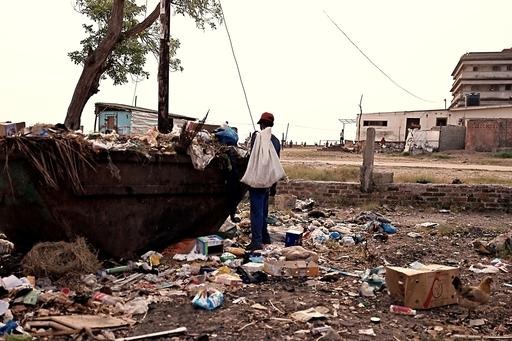
Mozambique was affected by two category 4 cyclones in 2019: Cyclone Idai in March, which affected the central region; and Cyclone Kenneth in April, which affected the northern region and led to severe flooding. These events were the worst natural disasters in southern Africa in nearly two decades. A UNICEF field presence was established in the most affected cities to ensure operational efficiency and timely response.

“First it was the wind blowing hard. Then came the heavy rain,” says Angelina Paulo, a single mother of seven children. “All of a sudden, the roof came down over our heads.”
“We managed to get out alive and we ran to a neighbor’s house where we stayed until the storm passed. We went to find shelter in the nearby school before we were moved to this warehouse,” she says. “I’ve lost everything, my house, and my crops”. Angelina’s story is a familiar one among the families who have taken shelter in the Cafumpe accommodation in the district of Gondola, in the central province of Manica. A mobile health team also provided primary health care to those affected by the floods. Unicef provided vaccines to successfully immunize families against cholera, polio, measles, and children were screened for malnutrition and referred for life-saving treatments. – All this is made possible thanks to your continual support.
Refugee and Migrant Crisis
In 2019, fewer people crossed through Mediterranean migration routes compared to 2018 but there was an increase in the proportion of children. One in four of the migrants arriving in Europe through Mediterranean migration routes was a child.
Children on the move continue to experience sub-standard reception conditions, overcrowding, violence, and abuse. Basic health and nutrition services for young children and their mothers, as well as education opportunities, especially for pre-primary and secondary school-age children, are scarce.
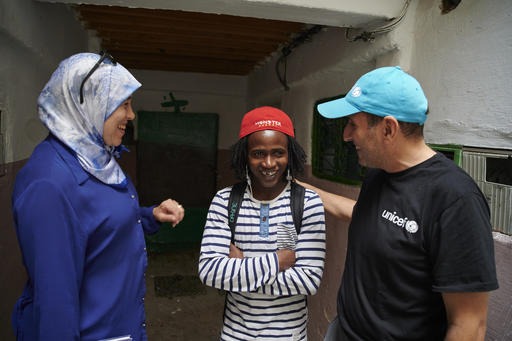
Mohammed Baqir, 17 years old, a migrant from Guinea Conakry, came to Morocco. Narrating his story, Baqir said, “My father died when I was only 5 years old, and my mother married another man. I started living with my uncle after that. When I was only 14 years old, I ran away from my uncle’s home because I was afraid of gangsters in my neighborhood. I eventually met a group of people migrating from the country and I joined them. I wanted opportunities to get an education, training so I can have a good life.”
Syria Crisis
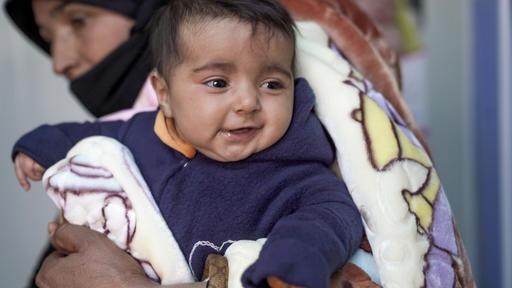
After more than eight years of conflict, the Syrian crisis continues to have a huge impact on children inside Syria, across the region and beyond. Every Syrian child has been impacted by violence, severed family ties and lack of access to vital services. During the winter, temperatures drop to zero and below in several areas and young children and babies are the most vulnerable to the cold. In such conditions, not every baby survives but by making sure mothers and babies have access to affordable, quality healthcare, food and vaccinations, warm clothes and protection, we can save newborn lives.
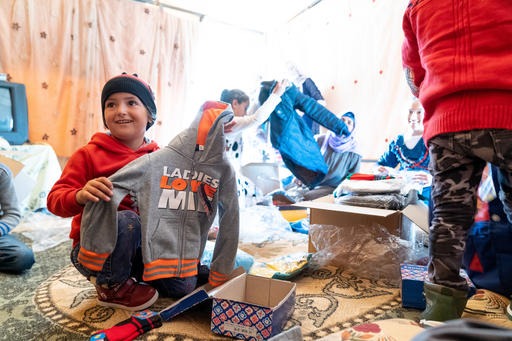
Sham, 4 years, unpacks her new warm jumper. The family are refugees from Syria and came to Jordan six years ago. The four children have just received their winter clothing kit from UNICEF. It’s the first time they have received such assistance.
Sham gives a radiant smile as he finds out that the clothes he was given were exactly his size. Displaced children like Sham are especially vulnerable during the winter. As temperatures drop, children are at risk of hypothermia, pneumonia and other deadly diseases. Alternative care arrangements have been put in place by local partners for children like him. A dedicated social worker regularly visits Sham and the other separated children. Sham also participates in psychosocial support activities and during these activities, they find a moment to play, sing, and be children again.
Ebola in the Democratic Republic of Congo
Ebola is terrifying for adults – but even more so for children. Children exposed to Ebola witness death and suffering, lose loved ones, are infected themselves, or have to spend weeks in isolation because they have had contact with someone infected with the virus. Children account for a significant proportion of those infected with Ebola in the Democratic Republic of Congo, where the latest outbreak had been declared a Public Health Emergency. The effects of Ebola aren’t just physical. The stigmatization can be isolating for children who are already struggling to cope with incredible hardship and loss, and the emotional scars can take years to heal.
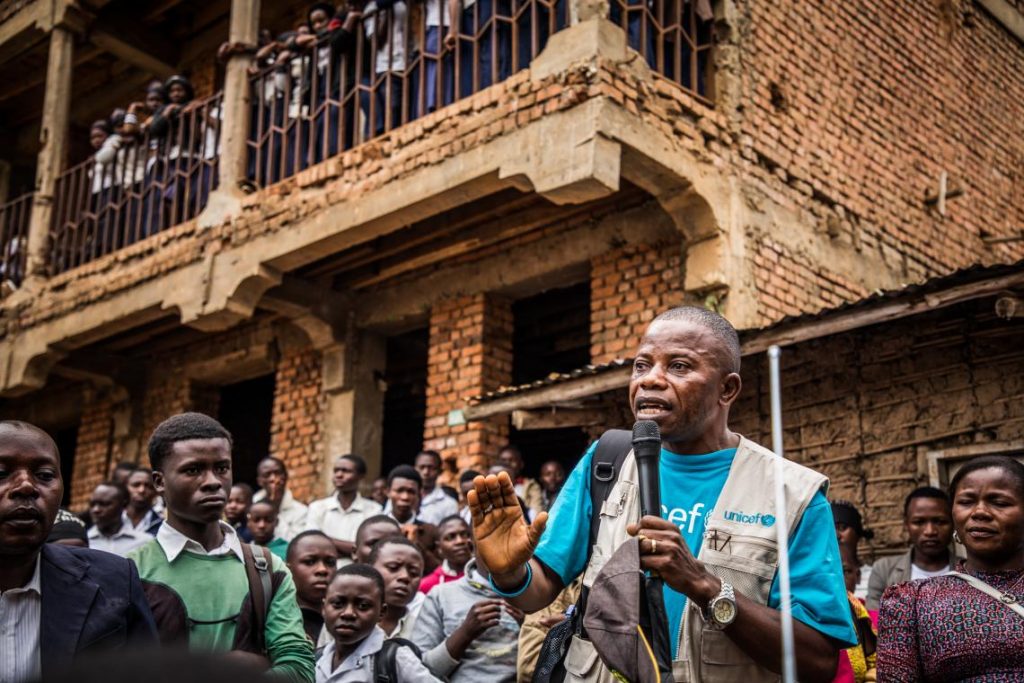
A UNICEF Communications officer talks to students at La Vérité school, as part of a sensitization campaign to raise awareness of Ebola in Butembo, the Democratic Republic of Congo.
Hurricane Dorian
On 1 September 2019, Category-5 Hurricane Dorian struck Abaco and Grand Bahama islands, leaving behind a path of destruction unprecedented in this Caribbean country. Thousands of children and adolescents have been affected by the storm, which flattened schools, homes, and hospitals, and left cars and boats hanging in trees. UNICEF moved quickly to provide safe water, food, health care, and non-formal education activities and psychosocial support for children.
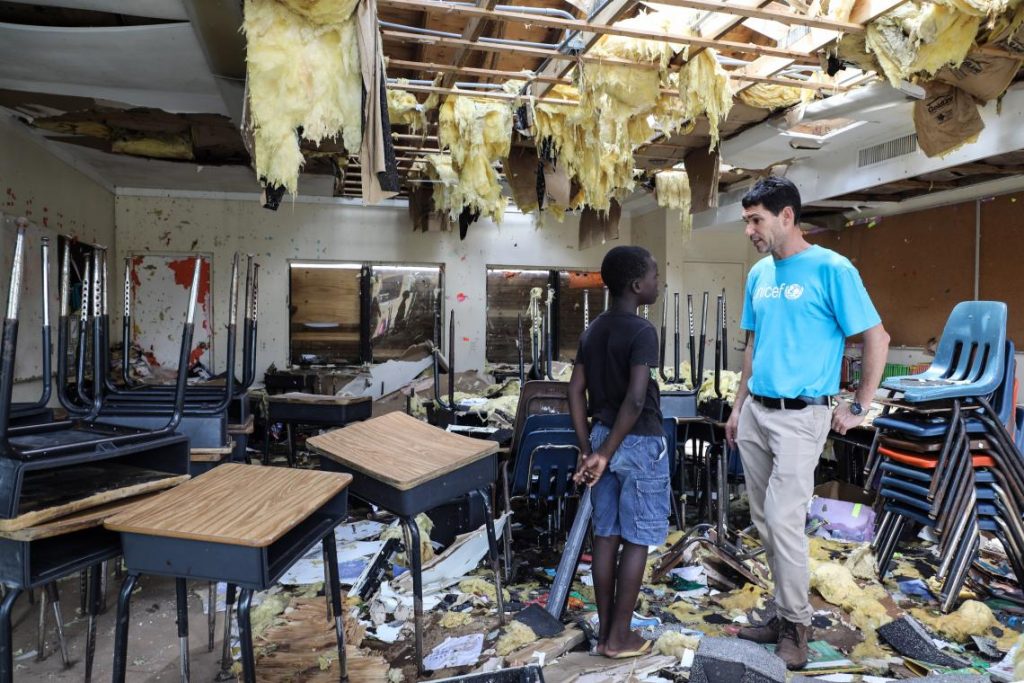
Ten-year-old Torres is one of those children. He lost his father, his home, his school – his life as he knew it – during Hurricane Dorian.
“As you can see, everything has been destroyed,” he says, standing in what is left of his old classroom at the Central Abaco public school in Marsh Harbour. “The roof, the chairs, and tables, the books. In every classroom, it’s the same story.”
“It was such a nice school,” he tells Hanoch Barlevi, a UNICEF Regional Emergency Specialist. “Now I don’t know where I will continue my studies”.
To continue their education, the government of the Bahamas with the support of UNICEF, registered approximately 10,000 students displaced by Hurricane Dorian to help them get back to non-affected schools as soon as possible.- Another feat thanks to the support of our global parents! Displaced students registering for school were also able to access other services during the reintegration process, including medical screenings required for school enrolment, uniform and lunch assistance, and referrals for counseling services and enrolment in social, sporting and extra-curricular activities.
Rohingya Crisis
When so many Rohingya refugees began flooding onto the beaches and paddy fields of southern Bangladesh it was the children who caught many people’s attention. As the refugees – almost 60 percent of whom were children – poured across the border from Myanmar into Bangladesh, they brought with them accounts of the unspeakable violence and brutality that had forced them to flee their homes and communities. Many of these vulnerable people have nothing – their homes have been destroyed, families split up, and many have no possessions except for the clothes on their backs. For these defenseless people, every single day is a struggle for survival. UNICEF have ensured access to learning for Rohingya children aged 4 to 14, who are enrolled in learning centers.
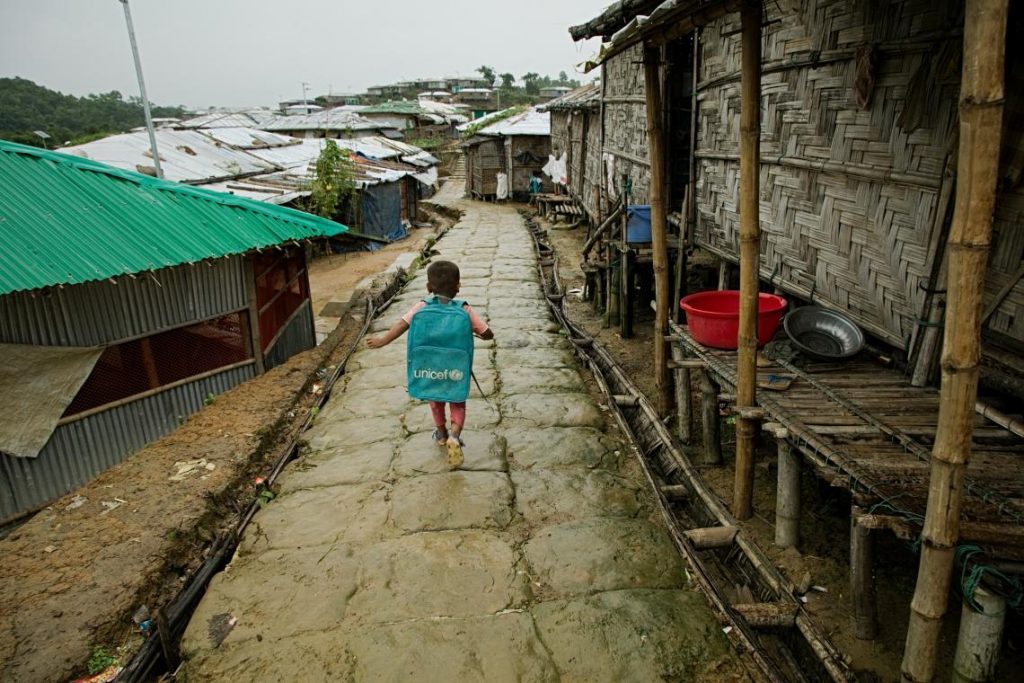
A young boy walks to a learning center during the monsoon rains in Cox’s Bazar, Bangladesh.
The 2019 overview also highlights efforts to strengthen the links between humanitarian action and development work, and thus to make a sustainable impact in areas affected or threatened by crises. In conflict and disaster, children suffer first and suffer most. Today, one in four of the world’s children lives in a conflict or disaster zone — a fact that should shake each of us to our core. All these children face an uncertain future. But amidst the crisis, your donations are helping to provide hope to vulnerable children out there.

